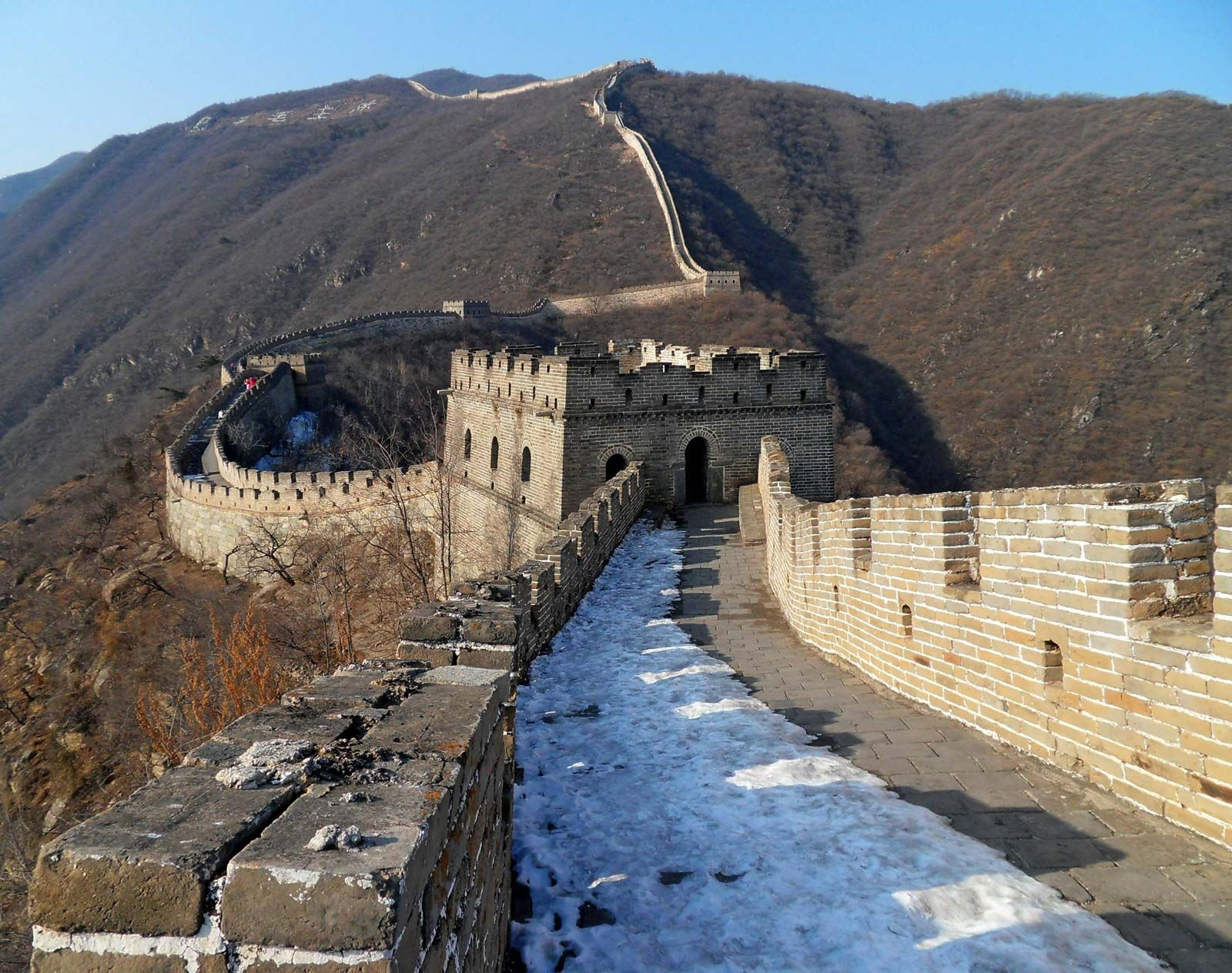The Great Wall of China, a symbol of ancient ingenuity and formidable defense, often conjures images of a singular, continuous barrier snaking across the dramatic landscapes of northern China. But where exactly is the Great Wall of China, and what were its origins? The answer is more complex and fascinating than a simple pinpoint on a map. The story of the Great Wall begins centuries before its most famous sections, with disparate states constructing their own defensive walls long before unification, spread across a vast territory.
Long before the Qin Dynasty united China and linked sections into what we recognize today, various Chinese states were already building extensive fortifications. As early as the 7th century BCE, the state of Chu took the initiative, constructing what was known as the “Square Wall.” This early defensive structure was located in the northern reaches of Chu’s capital province, marking one of the earliest known instances of large-scale wall building in China. This wasn’t a solitary effort; other states soon recognized the strategic advantage of such defenses.
From the 6th to the 4th centuries BCE, the practice of building walls spread. The state of Qi, situated in the eastern part of China, embarked on an ambitious project to create a vast perimeter wall. They cleverly integrated existing river dikes with newly built bulwarks and naturally impassable mountainous terrain. This Qi wall, primarily made of earth and stone, stretched across a significant area, eventually reaching the shores of the Yellow Sea, demonstrating an understanding of geographical advantages in defense.
Further inland, the state of Zhongshan constructed its own wall system to protect itself from invasions from the states of Zhao and Qin to its southwest. This indicates that even within China, these early walls served as borders and defenses against neighboring powers, highlighting a period of fragmented kingdoms and constant territorial disputes. The state of Wei, strategically important, developed two distinct defensive lines: the Hexi Wall and the Henan Wall. The Hexi Wall, meaning “West of the [Yellow] River,” was specifically designed as a defense against the Qin state and nomadic groups from the west. King Hui of Wei initiated its construction (370–335 BCE), extending it from existing dikes along the Luo River, starting near Xiangyuan Cave east of Mount Hua and reaching Guyang, now part of Inner Mongolia. The Henan Wall, or “South of the River” Wall, protected Daliang, the Wei capital (modern Kaifeng). The Zheng state also engaged in wall construction, later rebuilt by the Han state after conquering Zheng, demonstrating the continued importance of these fortifications across different eras.
The state of Zhao was particularly active in wall building, completing both a southern and a northern wall. The southern wall was primarily intended to defend against the neighboring state of Wei, showcasing the intricate web of inter-state rivalries and defenses.
The image captures the moon rising over the majestic Great Wall of China, illustrating the wall’s historical presence in the northern landscapes of China.
The Qin state, under the transformative administrative reforms of Shang Yang, rose to become the dominant power among the seven states. However, this strength also attracted attention from nomadic groups to the north, such as the Donghu and Loufan, who frequently raided Qin territories. In response, Qin constructed its own northern wall, stretching from Lintiao northward along the Liupan Mountains and terminating at the Huang He (Yellow River).
The Yan state, located in the northeast, prepared two separate defensive lines: the Northern Wall and the Yishui Wall. These were crucial for defending against not only northern nomadic groups like the Donghu, Linhu, and Loufan, but also the powerful Qi state to the south. The Yishui Wall was built upon the dike of the Yi River to defend against Qi and Zhao, Yan’s main rivals. It began southwest of Yi City, the Yan capital, and extended south of Wen’an. In 290 BCE, the Yan state further fortified its northern frontier by building the Northern Wall along the Yan Mountains. This impressive segment started northeast near Zhangjiakou in Hebei, crossed the Liao River, and reached the ancient city of Xiangping (modern Liaoyang). This Northern Wall of Yan marked the last major section of the Great Wall constructed during the Zhanguo period, also known as the Warring States period.
This image showcases the Great Wall of China at Mutianyu, located northeast of Beijing, a popular and well-preserved section demonstrating the wall’s enduring structure.
The year 221 BCE marked a turning point when Shihuangdi, the first Qin emperor, completed the annexation of Qi, unifying China under his rule. Recognizing that the existing state walls now hindered internal movement and administration, he ordered their removal. However, the threat from the northern nomadic Xiongnu remained. Shihuangdi dispatched General Meng Tian to garrison the northern border and undertake a monumental project: linking the existing wall segments of Qin, Yan, and Zhao into a unified and more extensive defense system. This ambitious undertaking, known as the “10,000-Li Long Wall,” began around 214 BCE and lasted for a decade, employing hundreds of thousands of soldiers and conscripted laborers. Despite this massive effort, with the fall of the Qin dynasty after Shihuangdi’s death, the wall was largely abandoned and fell into disrepair, awaiting future dynasties to rebuild and reinforce it.
In conclusion, when considering “Where Is The Great Wall Of China,” it’s essential to understand that its origins are dispersed across numerous locations and time periods, predating the unified empire. The early walls were not one singular entity but a collection of state-built fortifications, scattered across what is now northern China, from the Yellow Sea in the east to regions west of the Yellow River and into Inner Mongolia. These early constructions by states like Chu, Qi, Wei, Yan, Zhao, and Qin laid the groundwork for the more unified and extensive Great Wall we know today, demonstrating that the answer to “where is the Great Wall of China” is not just a place, but a historical evolution across a wide geographical expanse.


